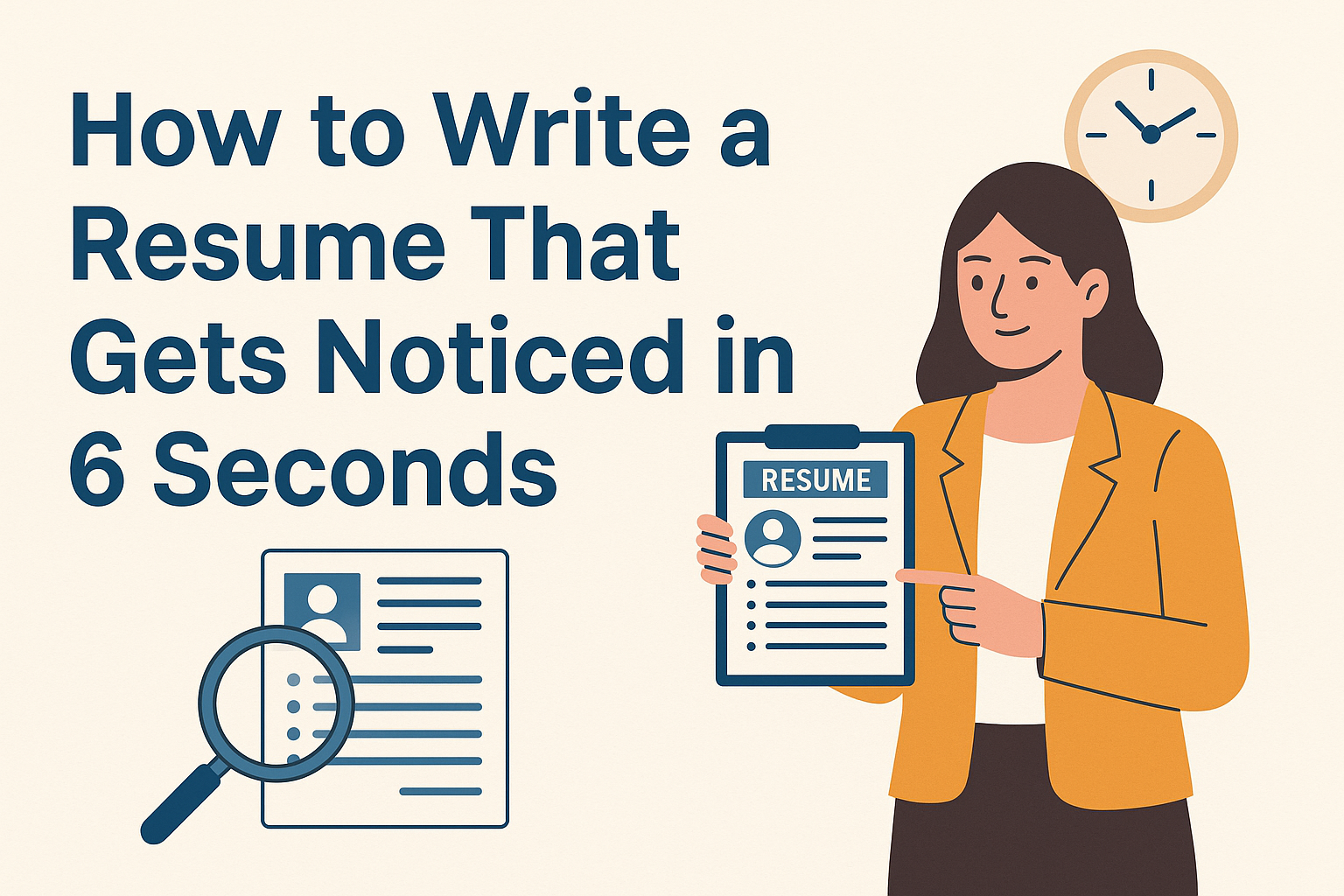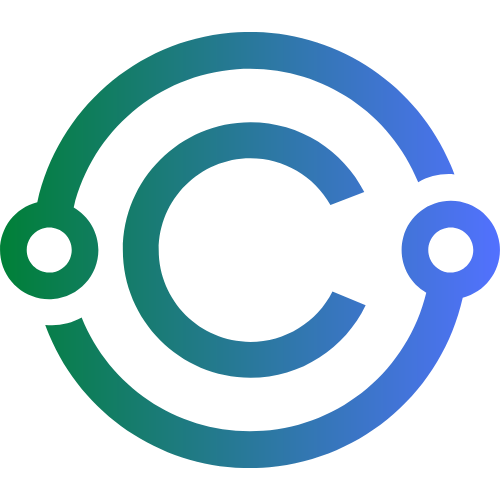How to Write a Resume That Gets Noticed in 6 Seconds

You’ve probably heard it before: recruiters spend just 6 seconds scanning a resume before deciding whether it’s worth reading further. Sounds harsh, right? But in a world where hundreds (or even thousands) of applications pour in for a single job posting, your resume has to stand out fast—or risk being overlooked.
But don’t worry. Writing a resume that captures attention doesn’t mean you need flashy graphics or buzzwords. It means writing with clarity, strategy, and impact.
In this guide, we’ll show you how to craft a resume that not only passes the 6-second test but also makes recruiters want to learn more. We'll include practical tips, examples, tools, and a real-life case study.
1. Understand What Recruiters Actually Look For in 6 Seconds
In the first scan, most recruiters check:
- Your name and location
- Current and past job titles
- Company names
- Dates of employment
- Key skills or certifications
- Overall layout and formatting
Source: Ladders Eye-Tracking Study
Your job? Make those elements easy to find and impressive to read.
2. Choose the Right Resume Format
There are three main formats:
1. Reverse-Chronological: Most popular. Lists jobs from most recent to oldest. 2. Functional: Focuses on skills rather than job history. Ideal for career changers. 3. Hybrid (Recommended): Combines the best of both.
Use a clean, professional template: Try tools like:
Avoid overly creative formats unless you're in design/creative roles.
3. Nail Your Resume Header
Your header should include:
- Full Name
- Location (City, State/Country)
- Phone Number
- Professional Email (use Gmail or custom domain)
- LinkedIn Profile URL (customize it)
- Optional: Link to online portfolio or website
Example:
JANE DOE
London, UK | +44 123 456 7890 | jane.doe@email.com
linkedin.com/in/janedoe | janedoedesigns.com
4. Write a Compelling Summary (Not an Objective)
A Professional Summary is a 2-3 sentence snapshot of who you are and what you offer. Avoid old-school objectives like "Seeking a challenging role..."
Instead, try this:
Data-driven marketing specialist with 5+ years of experience creating multi-channel campaigns. Proven record of increasing leads by 40% in 12 months. Looking to bring my expertise to a fast-paced tech environment.
5. Focus on Achievements, Not Duties
Most resumes list responsibilities. But what really stands out is impact.
Instead of:
Managed social media accounts
Say:
Grew Instagram following from 5K to 25K and increased engagement by 60% in 6 months.
Use quantifiable metrics wherever possible:
- % improvements
- Revenue or cost savings
- Project timelines
- Team or client sizes
6. Use Strong, Action-Packed Language
Start each bullet point with a powerful verb:
- Led, Created, Improved, Increased, Reduced, Managed, Launched, Streamlined, Designed, Delivered
Avoid weak words like "helped" or "worked on."
Example:
- Launched a customer referral program that increased user acquisition by 35% within the first quarter.
7. Tailor Every Resume to the Job Description
One-size-fits-all resumes rarely work.
How to tailor:
- Read the job posting carefully
- Highlight keywords (tools, skills, responsibilities)
- Mirror those keywords in your summary, experience, and skills
Use tools like Jobscan to compare your resume against job descriptions.
8. List Skills Strategically
Separate your hard skills (e.g., Python, Adobe Illustrator, SEO) and soft skills (e.g., communication, leadership).
Place key skills in a dedicated “Skills” section near the top of your resume or within each job entry.
Tip: Include tools/platforms specific to the role (e.g., Salesforce, HubSpot, Jira, Figma).
9. Keep it Concise and Skimmable
Recruiters skim. Make it easy.
- Use bullet points
- Avoid paragraphs
- Keep it to one page (for less than 10 years' experience)
- Use clear headings
- Keep font readable (11–12 pt)
10. Avoid These Common Mistakes
- Typos and grammar errors
- Using an unprofessional email address
- Outdated formats or fonts
- Listing duties without context or impact
- Including references (or "References available upon request")
- Personal details like age, photo, or marital status (unless required by region)
Case Study: Arjun’s Resume Transformation
Arjun, a software engineer in the UAE, was applying to remote jobs globally but getting zero responses. His original resume:
- Used a dense paragraph format
- Listed tasks instead of accomplishments
- Had no summary or keywords
He revamped it with:
- A strong summary
- Bullet points focused on achievements ("Reduced API latency by 50%")
- A clean design using Canva
- Tailored each version for the job role
Within a month, Arjun got 6 interview calls, 3 freelance offers, and landed a full-time remote job at a fintech company in Germany.
Takeaway: Formatting and focus make all the difference.
Helpful Resources to Level Up Your Resume
You don’t need a fancy design or an Ivy League degree to impress recruiters. You need a resume that:
- Highlights what matters most
- Shows real value and results
- Makes it easy to say "yes, let’s interview this person"
If your resume can pass the 6-second test, it can open doors to jobs you truly want.
So start now. Make edits. Tell your story with impact. And stand out where it counts.
Subscribe to UJ+ for weekly job search strategies, career tips, and real-world examples that help you land smarter opportunities.

